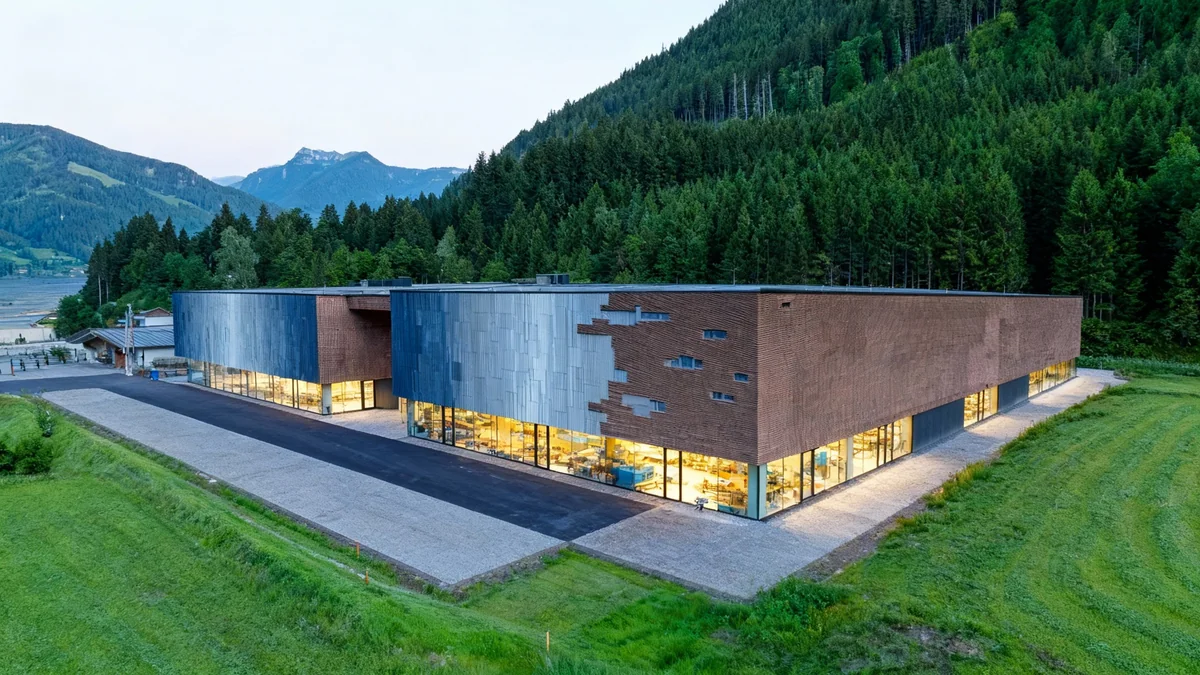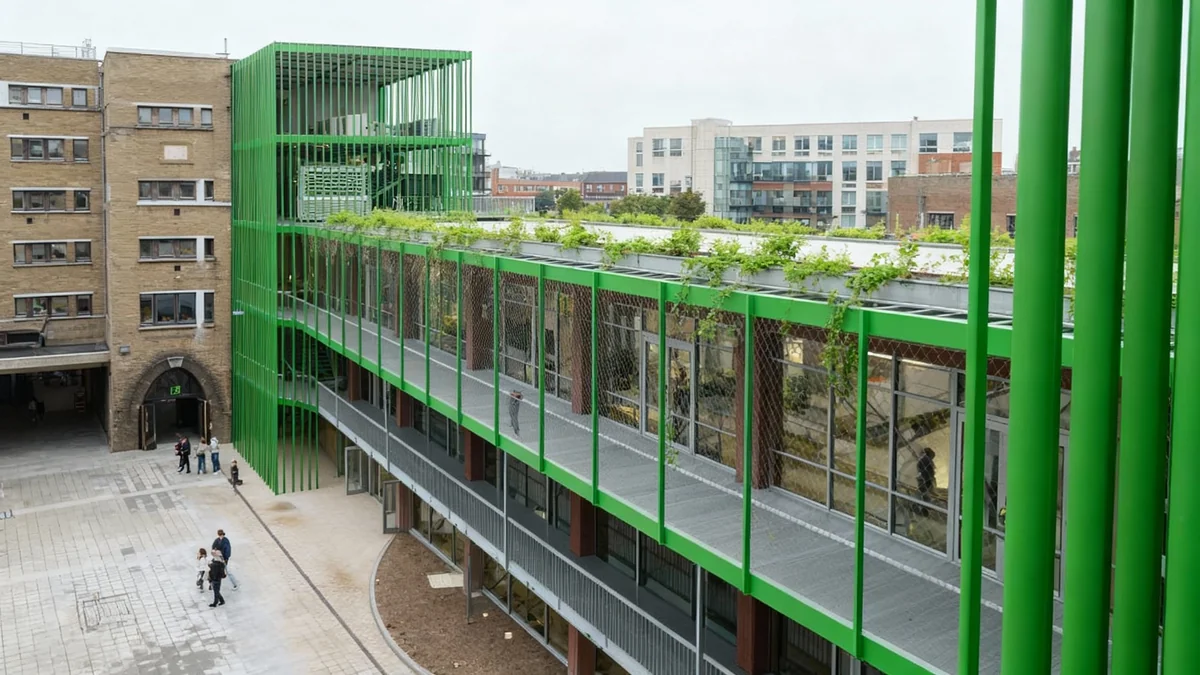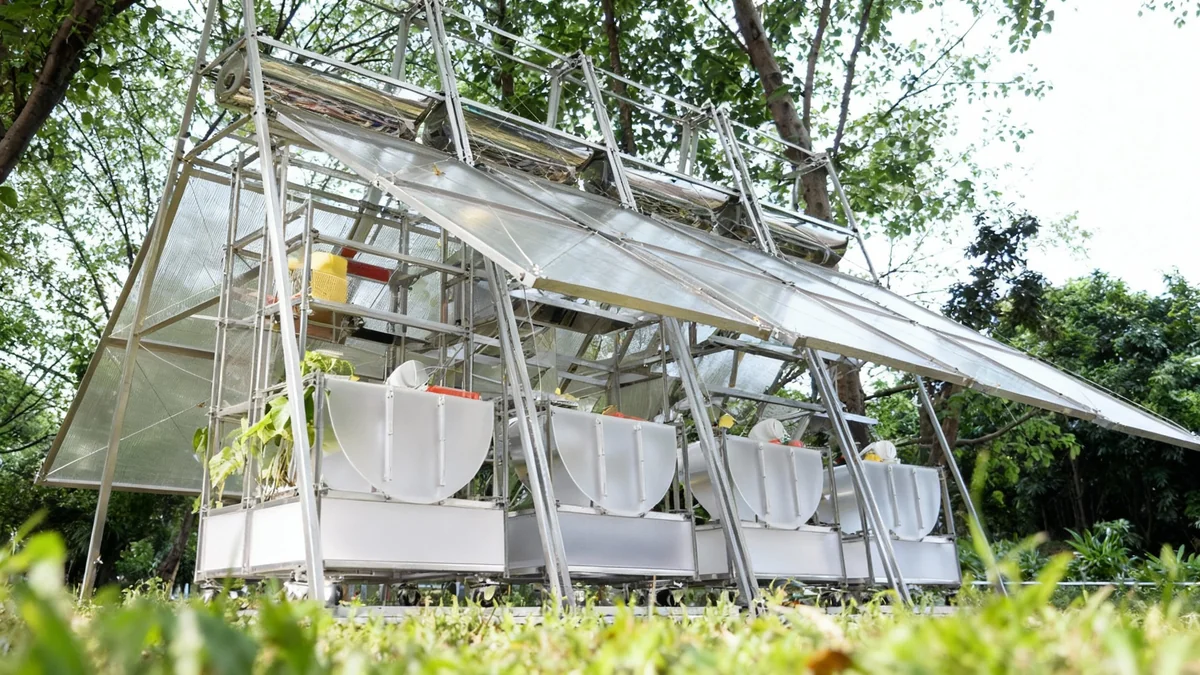The 5th Seoul Biennale of Architecture and Urbanism recently opened its doors at Songhyeon Green Plaza in central Seoul. This major architectural event, recognized as Asia's largest public architecture festival, is led by General Director Thomas Heatherwick. The Biennale focuses on a central theme: how cities can become "radically more human." It runs through November 18, bringing together a variety of exhibitions, international discussions, and community-led initiatives. The goal is to examine how architecture can create more inclusive and lasting urban environments for people.
Key Takeaways
- The 5th Seoul Biennale of Architecture and Urbanism is directed by Thomas Heatherwick.
- Its theme focuses on making cities "radically more human."
- Key installations include the 90-meter-long "Humanize Wall" and 24 "Walls of Public Life."
- The Biennale features 400 projects from 38 countries and 110 architects.
- It includes global forums, citizen projects, and exhibitions across multiple venues in Seoul.
A Focus on Human Experience in Cities
The Seoul Biennale aims to shift the conversation around urban development. Instead of focusing solely on infrastructure or large-scale projects, it emphasizes the human element. This year's theme directly challenges architects, designers, and citizens to rethink how buildings and public spaces affect daily life and well-being. The festival offers a platform for new ideas and practical solutions to make urban areas more livable and engaging.
The event officially began on September 26. Seoul's Mayor, Oh Se-hoon, led the opening ceremony. This was followed by a two-day forum called "Emotional City." More than 400 activists, academics, and architects attended this forum. They discussed critical issues related to urban design and its impact on people.
Biennale at a Glance
- Duration: September 26 – November 18
- Location: Songhyeon Green Plaza, Seoul Hall of Urbanism and Architecture
- Projects: 400 from 38 countries
- Architects: 110 featured
- Director: Thomas Heatherwick
The "Humanize Wall" and Public Engagement
A central attraction at the Biennale is the "Humanize Wall." This impressive installation stands 90 meters long and four stories high. It is made up of 1,428 steel tiles. Each tile features contributions from citizens, scientists, and designers. These contributions explore ideas for a more human-centered urban future. The wall presents 400 projects from 38 countries, created by 110 architects. It forms a twisting gateway that frames a manifesto for new approaches to architecture and urban living. As an open-air exhibition, the wall encourages visitors to interact with its images and texts at different levels of detail, fostering a direct connection with the ideas presented.
Understanding the Biennale
A biennale is a large-scale international exhibition, typically held every two years. Architecture biennales, like the one in Seoul, serve as critical platforms for discussing urban challenges, showcasing innovative design, and proposing future directions for city development. They bring together professionals, policymakers, and the public to engage with complex ideas about our built environment.
Walls of Public Life Showcase Global Ideas
Near the "Humanize Wall," visitors can explore 24 "Walls of Public Life." These large-scale building fragments were designed by international teams. Each fragment measures 2.4 meters wide and 4.8 meters high. They demonstrate different ways to rethink building exteriors. The contributors come from various disciplines and cultural backgrounds. This includes chefs, artisans, architects, and engineers from countries like Korea, Burkina Faso, India, China, Japan, the United States, and the United Kingdom. This diverse participation highlights a global effort to innovate in architectural design.
"Our aim is to ignite a global conversation about how our cities can truly serve humanity, not just infrastructure," stated Thomas Heatherwick, General Director of the Biennale.
Forums and Research on Emotional Cities
The "Emotional City" forum, held during the opening, was a key component of the Biennale. It introduced three research studies from the Humanize Campaign. These studies investigated the connection between building facades, public health, and social well-being. The findings aim to inform future urban planning and architectural design, promoting spaces that support emotional and physical health.
The Biennale extends beyond Songhyeon Green Plaza. Additional exhibitions are hosted at the Seoul Hall of Urbanism and Architecture. These exhibitions offer deeper insights into the festival's theme. One initiative involves over 500 Seoul residents. They reflected on how architecture influences emotional experiences. This grassroots project highlights the direct impact of design on daily life.
Diverse Exhibitions Across Seoul
Another exhibition, "Emotionally Yours, Seoul," is a digital installation. It uses public submissions of building facades and associated feelings. This participatory approach allows citizens to contribute their personal experiences of the city. "The City's Face" exhibition features 25 projects from 21 cities. These projects focus on human-centered design principles. They showcase successful examples of urban spaces designed with people in mind.
Finally, "From a Bird's Eye to the Human Eye" highlights 18 new architectural works shaping Seoul's future. This exhibition focuses on the experiential perspective, showing how these designs will feel to those who live and work in them. These diverse exhibitions ensure a comprehensive exploration of the Biennale's central theme.
Heatherwick Studio's Ongoing Asian Projects
Thomas Heatherwick, in addition to his role as General Director for the Biennale, is actively involved in several significant projects across Asia through Heatherwick Studio. In Seoul, the studio has been selected as the design partner for the redevelopment of the Yeouido Daegyo Apartments. This marks their first residential project in South Korea. The studio was also recently chosen to lead the redesign of the Coex Convention Centre, a major civic landmark in the city. This project aims to reimagine the convention center's role and design within Seoul's urban fabric.
Beyond South Korea, Heatherwick Studio has also expanded its presence in Southeast Asia. In Bangkok, Thailand, the studio unveiled "Hatai," a new mixed-use development. This project represents their first venture in Thailand, further solidifying their influence in the region's architectural landscape. These projects demonstrate a continued commitment to innovative and human-centered design on a global scale.




